Juniper "Arnold": description, tips for growing and reproduction
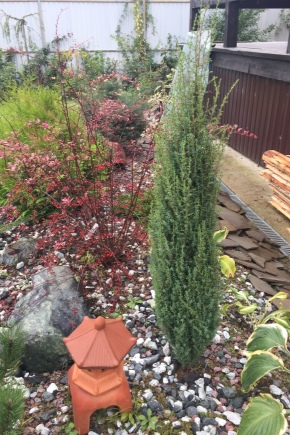
Ephedra are among the most popular plants that landscape designers use to create their projects. Due to their unpretentiousness and ease of care, they can be planted in various climatic zones, and a high level of compatibility with other plants makes it possible to create unique green compositions.
Junipers are among the most popular garden plants, and the high demand for them has forced breeders to work on the development of new varieties. One of the most beautiful junipers is the Arnold variety. Due to its unusual shape and attractive appearance, this variety can increasingly be seen near private houses and municipal facilities.
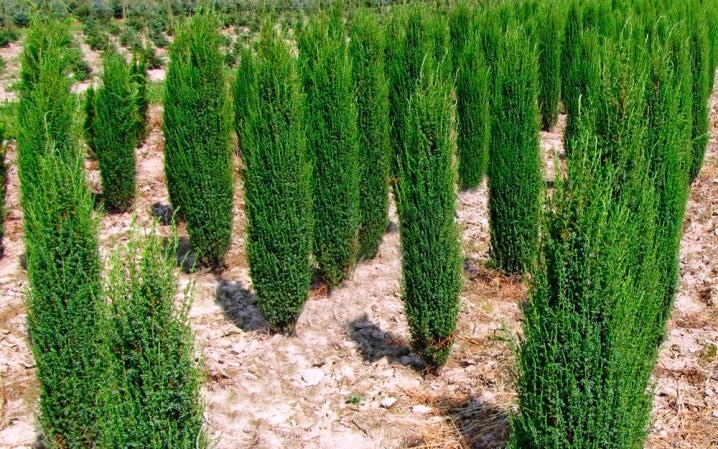
Feature and Description
Common juniper "Arnold" is a slow-growing coniferous plant that belongs to the cypress family. The crown has the appearance of a column due to the vertical branches, which are closely spaced to each other and grow strictly parallel to the trunk. The needles can be colored both green and dark green, and sometimes the plant has a blue tint. The length of the needles often reaches 15 mm. The fruits begin to ripen no earlier than two years after planting and are dark blue with a gray-blue bloom. The maximum size of one cone is 10 mm and has 1 to 3 seeds inside.
The annual growth of the plant is 10 cm, therefore, by the age of 10, the height of the juniper can reach 2 meters, and the crown diameter often exceeds 40 cm. Despite the fact that the plant is considered dwarf, in comfortable conditions its height can reach 5 meters.
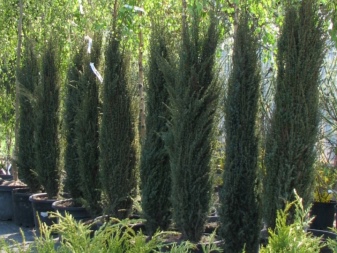
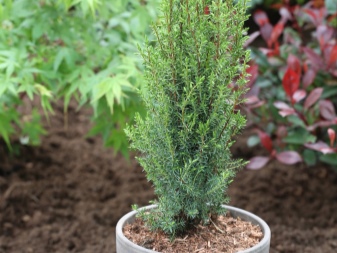

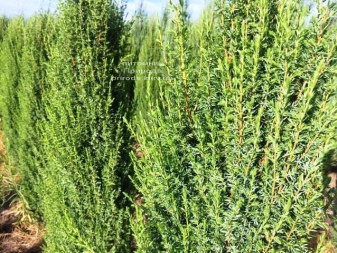
Landing
"Arnold" refers to unpretentious plants, the cultivation of which will not cause difficulties even for novice gardeners. For planting seedlings, it is necessary to give preference to sunny areas that have little shading. Plants planted in the shade have pale needles and a sparse crown. The optimum distance between plants is 2 meters. Experts do not recommend thickening the plantings; air must pass freely between the bushes, which will prevent the appearance and spread of dangerous diseases.
Juniper grows well on various soils, but still prefers drained and sandy loam soils with an acidity of no more than 7 units. If clay predominates in the soil, then in the planting pit it is imperative to make a drainage layer and add medium-fraction river sand.
It is necessary to purchase planting material only in large specialized nurseries, which are fully responsible for their goods. But it is better to refuse to buy in spontaneous markets due to the possible acquisition of low-quality and diseased seedlings that do not have the genetic characteristics of this variety. Signs of quality seedlings:
- age - at least 2 years;
- height - no more than 100 cm;
- the presence of a beautiful crown and straight shoots;
- lack of mechanical damage and signs of disease.

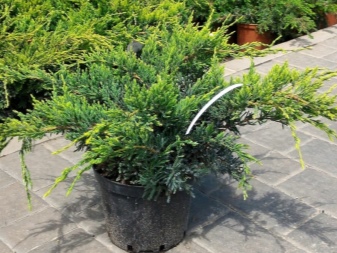
If the planting material has a closed root system, then a few hours before planting, the containers should be well spilled. Seedlings with open roots should simply be soaked in a container of water, and treated with root growth accelerators before planting.
The most favorable time for planting is early spring and mid-autumn. When forming a planting pit, novice gardeners should take into account that its volume should be at least 2 times the size of the seedling's earthen lump. The bottom of the depression must be covered with a drainage mixture of sand and gravel. The soil mixture for planting can be purchased ready-made or compiled independently by mixing leafy soil, sand and peat in equal proportions. When falling asleep a planted seedling, it is necessary to control the location of the root collar, which should be 5 cm above the ground.
When filling the hole with nutritious soil, extreme care must be taken so as not to damage the root system. Planted plants must be watered abundantly and mulched with peat mixture.
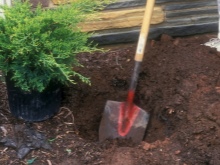
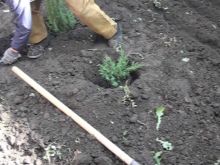
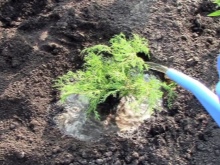
Care
Despite the fact that the plant belongs to an unpretentious and undemanding species, young seedlings need care and attention. During the rooting period, the plant should not lack water, so it should be watered abundantly twice a week. On hot and sultry days, it is advisable to spray the plantings with clean water at room temperature. To provide plants with moisture, it is enough to water them abundantly once a month. To provide the juniper with all the necessary nutrients in early May, it is imperative to enrich the soil with mineral fertilizers, which can be purchased in specialized stores.
To enrich the root system with oxygen, one should not forget about loosening the root zone, and mulching the soil with compost, which should be carried out in early spring and in mid-autumn, will help prevent the soil from drying out.
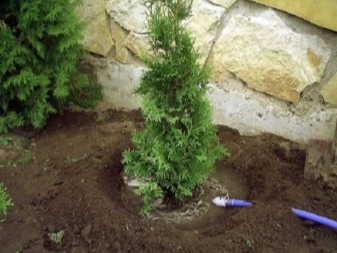
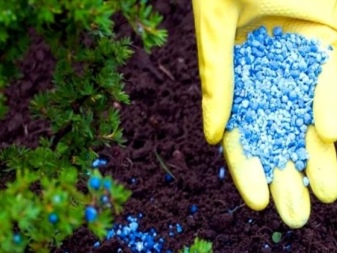
A coniferous plant needs a sanitary cut, which should be done in early spring. This event will allow not only to cleanse the plant from dry and deformed branches, but also stimulate the formation of new shoots. Due to the slow growth of juniper, a large number of needles should not be removed.
This variety belongs to frost-resistant species that easily tolerate low temperatures, but can be damaged by large amounts of snow and ice.
To prevent deformation of an adult bush, experts recommend tying the branches, and wrapping the whole plant with rope. It is necessary to build protective shelters near the young shoots, and cover the root zone with peat soil.
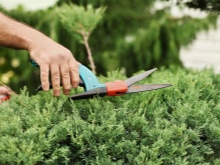


Reproduction
To get new plants, you can use the following breeding methods:
- seminal;
- grafting.
Growing seedlings from seeds is a very long and painstaking process that gardeners rarely use. Seed propagation is practiced by breeders working in professional nurseries. Fresh juniper seeds should be used as planting material, which must undergo scarification within 3 months. The cold will help break down the outer shell and speed up the germination of the seed. Only then can the seeds be planted in a pre-prepared nutrient soil.
The soil in containers must be kept moist at all times. Drying out of the soil can provoke the death of seedlings.

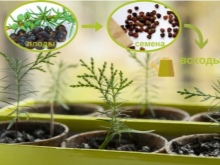

The grafting method is the simplest and most common one that even inexperienced gardeners can use. In this case, shoots with a small amount of maternal tree bark serve as planting material. After pretreatment with root growth accelerators, the cuttings should be planted in wet nutrient soil and a greenhouse should be created around them. After the first shoots appear, the film can be removed and the new plant can be continued to grow. Transplantation to a permanent place of growth can be carried out only after 3-4 years, when the plant can form a strong root system.
Experts do not recommend using layering for propagation.Branches dug in and pressed to the ground can ruin the crown of the mother bush and make it disproportionate and ugly.
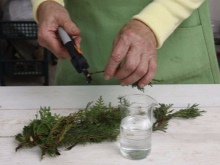
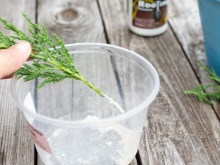
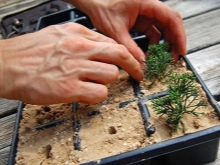
Diseases and pests
Spoil the beauty of the ephedra and the following diseases can lead to his death.
- Rust - a dangerous disease caused by a fungus. Signs - the appearance of red and brown growths. Consequences - thickening of the affected areas with their subsequent death.
- Tracheomycosis - a fungal disease that provokes yellowing and shedding of needles, as well as drying out of the bark and branches. The first signs are the dying off of the tops of the shoots. If the fungus is not destroyed, then it will provoke the death of the entire plant.
- Brown shute - a fungal infection that provokes the formation of black growths on the needles and their subsequent shedding.
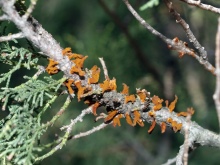
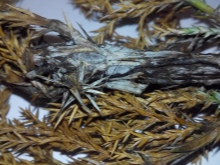
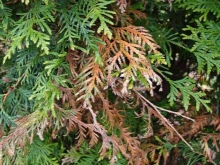
Arnold often suffers from the following pests.
- Angle-winged moth - a small butterfly that eats needles, but does not touch the branches.
- Scabbard juniper - a dangerous pest that sucks juice from the plant. Damaged branches dry out quickly and die off.
- Gall midges - small midges, the size of which does not exceed 3 mm. Parasites form their nests by gluing needles. Areas with cocoons dry out quickly and die off.
- Aphid Are common parasites that suck the sap from the plant.
- Spider mite - a small insect, the first signs of an invasion of which is the appearance of a small cobweb.
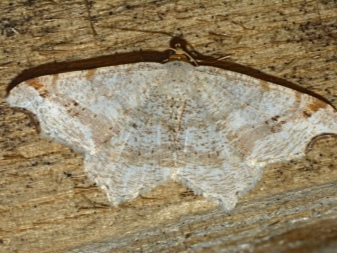
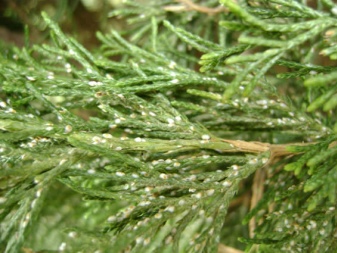
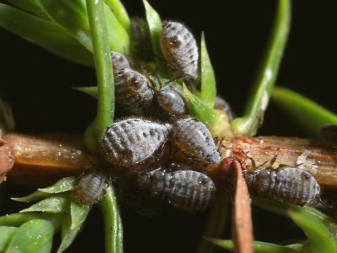
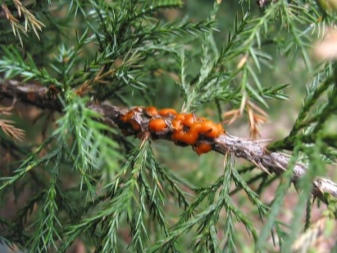
To prevent the appearance of pests and diseases, it is necessary to properly and timely care for the juniper, as well as regularly conduct its visual inspection. It is necessary to carry out treatment and preventive measures only with high-quality and certified chemicals. If it was not possible to cure the ephedra, then it is better to completely remove and burn it so that the disease does not spread to other plants.
To reduce the likelihood of fungal and viral diseases, juniper should not be planted next to fruit trees that suffer from the same diseases.
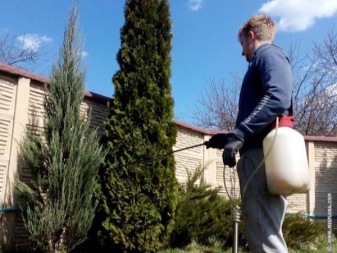

Use in landscape design
The Arnold variety is not only a beautiful ornamental plant that is widely used by designers for landscaping various territories. Ephedra looks good both in single planting and in mixed compositions. Due to its columnar shape, "Arnold" often becomes the central part of alpine slides, coniferous alleys, rockeries, mixborders and Japanese gardens. Juniper is often used as a hedge and to create heather slopes.
Due to the presence of antiseptic phytoncides, "Arnold" is a favorite plant of decorators of medical and educational institutions, health resorts and green recreation areas. Despite its unpretentiousness, the ephedra feels uncomfortable in polluted areas and near highways. For landscaping dirty and industrial facilities, it is better to give preference to other coniferous varieties.

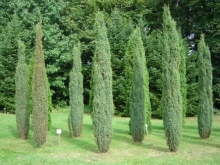
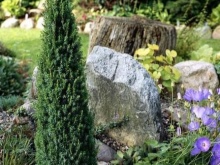
Compositions with Arnold in the center and ground cover low and medium conifers surround it effectively and stylishly. The combination of juniper with roses and hydrangeas will surprise you with its beauty and solemnity.
Green compositions can now be seen not only near social facilities and in city parks, but also near private and apartment buildings, whose residents are trying to decorate their territory on their own.
Experts recommend that novice designers pay attention to perennial and unpretentious plants, such as juniper, which will not only green the space, but also help to improve the health of the air.
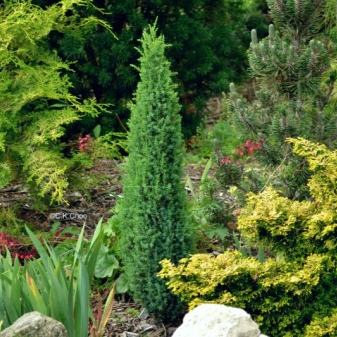
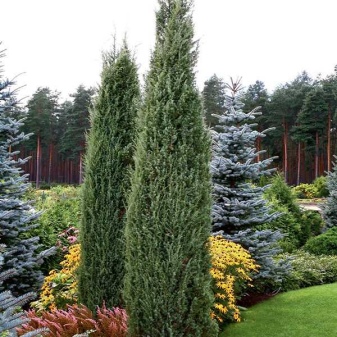
For the reasons for the death of conifers, why junipers dry and what to do, see the next video.



































































The comment was sent successfully.